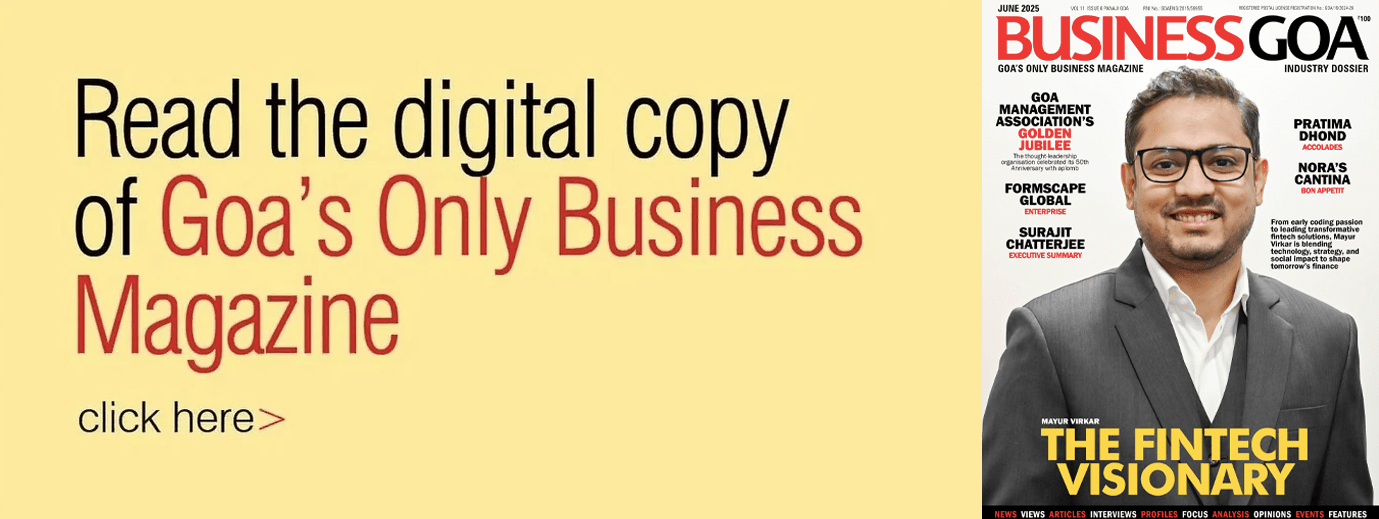
Samir Mardolker sheds light on how to make consumption more meaningful by incorporating art and science
I believe that the best products have an art or design element working in sync with the hard sciences to make consumption so very magical. Think Apple, Tesla, and American Express: The integration of art/design/ human elements with science presents itself in how well the product looks, feels or simply is a joy to consume. Art and science working hand in hand to create magic should not benew news to us. Think engineering and art
coming together hundreds of years ago to create architecture. But is the integration art or design with science still happening as much as it should? Or is the world, off late, too driven by science and tech progress leaving art mostly as an afterthought for a niche market?
• From an ecosystem perspective, it feels like the scientific faculty has made exponential progress with the rate of increase of processing power, data collection and storage while the art faculty has fallen behind. It will not be uncommon for you to see the most advanced tech system but with pathetic user interfaces – definitely not enough art-science integration to make them a ‘work of art’. This differential progress of art and science put the faculties a bit out of sync in product innovation resulting in the sub-optimal product experiences and rarer instances of magic.
• From a supply perspective, there is just not much time invested in perfection either from a rush to go to market or simply lack on appreciation of integrating art/design elements. If sales KPIs are linked to shelf and mind presence, it is understandable that more attention will be paid to even buy ourselves the presence for short term wins.
• From a demand perspective, only a very niche segment in every category and market invest the time in appreciating every consumption moment and look for the best. What can we do to push the boundaries for better art/science integration? Knowing that such integrating will result in better product and therefore better consumption moments, mindful consumption and everything positive that comes with it. Here is how we could work towards better art/ science integration:
For the ecosystem: Governments should ensure that institutional investments continue to happen in both areas – art and science; so that both faculties flourish. Asian parents/educators have been stereotypically known to undervalue artistic pursuits and that should change. Employers and institutions have a bias for scientific thinking versus creative mindset unless the job demands the latter and that should also change as well. Some of the best talent in some markets like India gets screened based on math and logic to make it to the finest institutions in the country. This perhaps leaves behind strong artistic skewed talent to be effectively integrated into mainstream businesses. It is good that despite science based screening for these institutions, there is a residual art element in most; being exposed to multiple languages and a rich history of art, culture and music.
For brands: Make human interactions count! I know it just isn’t practical as we all are resource constrained and machines/ digital is the way to go. What we should do is to be selective and focussed making sure people operate at the very highest standards when they interact with your customers. In one of our thought pieces called ‘The Experience Gap’, we noticed that some of the highest scoring brands were those that offered consumers a direct route to a real human being, when they really need it. The study also demonstrated that brands that use consumer data in a responsible manner to offer personalized experiences scored high. You can download the report here: https://clearstrategy.com/closingthegap/
For us: Do not settle for less. Be inspired from some cultures like Japan who place a high value on the arts in their definition of high-quality products. Be in a state of mindful consumption right from the time you wake up. How often have you focussed your attention to simple routine acts like brushing your teeth in the morning? If you did, you would realise how mundane and boring it is. And once that realisation seeps in, it would not take much to imagine what infusion of art would do to the category. Think what even a very naïve basic artistic intervention to introduce colour and flavour to change the brushing routine could do e.g. M&M style gummies that you could pop in your mouth and chew to create the paste foam you need to brush. A well-integrated art/design element then transforms a mundane morning to a magical one of choosing your colour and flavour from among tens of fantastic choices demanding on how you want to feel.
In summary, businesses need to be mindful to ensure continuation of a good integration of art and science in product design. If in doubt about why this is necessary, let us remind ourselves that the human race made the progress we did, because our right (arty) and left (scientific) brains converged to innovate and produce magic.
The writer is Managing Director (Asia) of Clear M&C Saatchi, Singapore. Email: Samy.Mardolker@clearstrategy.com





